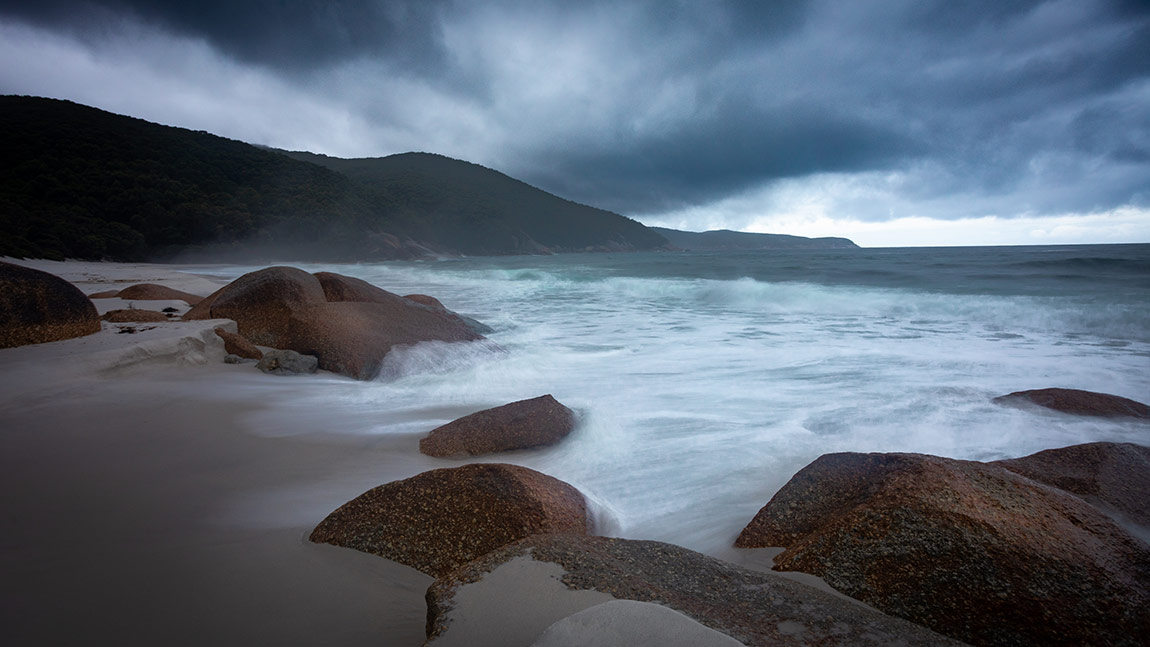Little Waterloo Bay is a popular overnight hiking destination at Wilsons Promontory, the southernmost tip of mainland Australia.
I had visited this beach a few weeks earlier and was met with clear blue skies in the evening and the same again in the morning. While the weather was warm the sky was boring and unphotogenic. So, a few weeks later I made a return trip, this time with an expected forecast of clouds and possible rain. Getting there starts with a 3-hour drive followed by a 3-hour hike across the promontory.
I arrived early afternoon, just as the rain started, and quickly set up camp before braving the weather to explore the beach and find some possible compositions for the morning. The beach faces east into the ocean and is perfect for viewing sunrises but not so great late in the day when it quickly becomes shaded by the surrounding hills.
Back at camp, the rain had settled in heavier than expected. I made some dinner and crawled into my sleeping bag for a very early night, hoping that the morning would bring slightly better weather. At 5 am I was wide awake having had more than my share of sleep. A quick coffee and then I grabbed my gear and made my way out onto the beach in complete darkness.
The rain had stopped, but there were still 2 hours until the sun would peak above the horizon. To bide my time, I played with some long exposure light painting and slowly made my way to the south end of the beach where I was hoping to get my sunrise shots.
As the morning light began to creep amongst the darkness, it became obvious that the cloud cover was thicker than I hoped. I shifted gears and began working on compositions that would capture the atmosphere and dark beauty of the space. I clicked away adjusting my compositions and settings as the tide and light crept closer and brighter.
This photo is one of many that I was happy with from the shoot. Definitely not a sunrise photo, but a very good representation of the atmosphere and environment at the time.
This capture stood out to me because, unlike most of the others from that morning, it was shot with a quicker 1-second exposure. This allowed the water to hold some of its natural form while still portraying movement against the leading line of rocks and adding to the drama of the scene.


